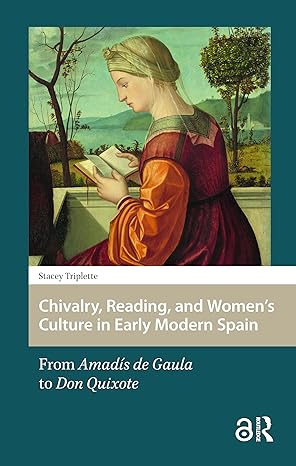
Chivalry, Reading, and Women's Culture in Early Modern Spain: From Amadís de Gaula to Don Quixote
Author(s): Stacey Triplette (Author)
- Publisher: Routledge
- Publication Date: December 1, 2025
- Edition: 1st
- Language: English
- Print length: 214 pages
- ISBN-10: 1041176902
- ISBN-13: 9781041176909
Book Description
The Iberian chivalric romance has long been thought of as an archaic, masculine genre and its popularity as an aberration in European literary history. Chivalry, Reading, and Women's Culture in Early Modern Spain contests this view, arguing that the surprisingly egalitarian gender politics of Spain's most famous romance of chivalry has guaranteed it a long afterlife. Amadís de Gaula had a notorious appeal for female audiences, and the early modern authors who borrowed from it varied in their reactions to its large cast of literate female characters. Don Quixote and other works that situate women as readers carry the influence of Amadís forward into the modern novel. When early modern authors read chivalric romance, they also read gender, harnessing the female characters of the source text to a variety of political and aesthetic purposes. This book analyses many versions of the romance from Spain, Portugal, France, Italy, and England and tells a new story of the life, death, and influences of Amadís.
Editorial Reviews
Review
Triplette's focused critique of women's literacy, both of the medieval texts' fictional characters and of women themselves as their readers, not only serves as a means of investigating gender equality and as a corrective to our increasingly partial reading practices, but also proposes a vitally effective method of approaching women's culture.- Anne J. Cruz, Early Modern Women, Fall 2020,
Chivalry, Reading, and Women's Culture in Early Modern Spain succeeds not only in examining the female characters in 'Amad's' and 'Don Quijote' but also in cogently and brilliantly bringing Beatriz Bernal and her Cristalián de España to the fore in Spanish Golden Age studies.- J. A. Garrido Ardila, Renaissance Quarterly, Volume LXXIII, No. 1
About the Author
Stacey Triplette is an Assistant Professor of Spanish and French at the University of Pittsburgh at Greensburg. Her essays have appeared in Cervantes: Bulletin of the Cervantes Society of America, Bulletin of Spanish Studies, and La corónica.
 Wow! eBook
Wow! eBook

